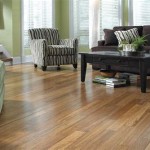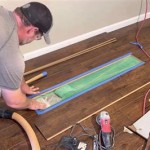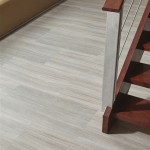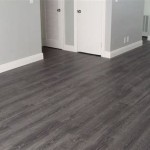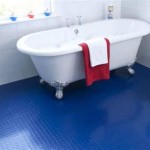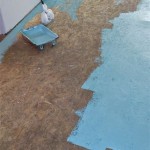Laminate Flooring Edging: A Comprehensive Guide
Laminate flooring offers an attractive and cost-effective alternative to hardwood, tile, or stone. Its durability and ease of installation make it a popular choice for both residential and commercial spaces. However, a crucial aspect of a successful laminate flooring installation, often overlooked, is the proper treatment of the edges. Laminate flooring edging is essential for creating a polished, professional look, protecting the flooring from damage, and ensuring a safe and aesthetically pleasing transition between the laminate and adjacent surfaces.
The edges of laminate flooring are inherently vulnerable to moisture, impact, and general wear and tear. Unprotected edges can chip, crack, or swell due to moisture exposure. Furthermore, exposed edges can present a tripping hazard and detract from the overall appearance of the floor. Therefore, selecting and installing the appropriate edging solution is paramount to the longevity and visual appeal of the finished floor.
This article provides a comprehensive overview of laminate flooring edging, covering the various types of edging available, their respective applications, and the proper installation techniques for achieving professional results. It will explore the importance of matching edging to the specific type of laminate flooring being installed and the unique requirements of different transition areas within a building. The goal is to equip readers with the knowledge necessary to make informed decisions about laminate flooring edging and to ensure a durable and visually appealing flooring installation.
Understanding the Importance of Laminate Flooring Edging
Laminate flooring edging serves several critical functions beyond mere aesthetics. Its primary purpose is to protect the exposed edges of the laminate planks or tiles from physical damage and moisture intrusion. Laminate flooring is constructed from layers of materials, including a core board typically made of high-density fiberboard (HDF) or medium-density fiberboard (MDF). These core boards are susceptible to swelling and warping if exposed to moisture. Edge protection effectively seals the edges, preventing water from seeping into the core and causing damage.
Another key function of edging is to create a seamless transition between the laminate flooring and other flooring surfaces, such as carpet, tile, or hardwood. Different flooring materials often have varying thicknesses, creating uneven surfaces and potential tripping hazards. Edging, particularly transition strips, bridges these height differences and provides a smooth, gradual transition, enhancing safety and accessibility.
Furthermore, edging contributes significantly to the overall aesthetic appeal of the flooring installation. Properly selected and installed edging can complement the color and style of the laminate flooring, creating a finished and professional look. It can also conceal any imperfections or gaps along the edges of the flooring, resulting in a clean and polished appearance.
The absence of proper edging can lead to a number of problems, including premature wear and tear, unsightly gaps, potential tripping hazards, and compromised structural integrity of the flooring. Therefore, investing in appropriate and high-quality edging is a crucial component of any successful laminate flooring installation.
Types of Laminate Flooring Edging
A variety of edging options are available for laminate flooring, each designed for specific applications and to address different transition needs. The choice of edging will depend on the type of flooring, the adjacent surfaces, and the desired aesthetic. Here are some of the most common types of laminate flooring edging:
*T-Molding:
T-molding is used to transition between two sections of laminate flooring of the same height, or between laminate flooring and other hard surfaces of the same height. It features a T-shaped profile that sits over the expansion gap between the two surfaces, creating a seamless transition. *Reducer Strips:
Reducer strips are designed to transition between laminate flooring and lower flooring surfaces, such as vinyl, tile, or thin carpet. They have a sloped profile that gradually reduces the height difference between the two surfaces, providing a smooth and safe transition. *End Caps (or Thresholds):
End caps are used to finish the exposed edges of laminate flooring where it meets a doorway or other vertical surface, such as a sliding glass door. They provide a clean and finished look, while also protecting the edge of the flooring from damage. *Quarter Round Molding:
Quarter round molding is a small, rounded molding that is typically used to cover the expansion gap between the laminate flooring and the wall. It is installed along the perimeter of the room, providing a decorative accent and concealing the gap while allowing for expansion and contraction of the flooring. *Wall Base (or Baseboard):
Wall base is a larger molding that is also used to cover the expansion gap between the laminate flooring and the wall. It provides a more substantial and decorative finish than quarter round molding and is often used in conjunction with quarter round for a layered look. *Stair Nose:
Stair nose is a specialized type of edging designed for use on staircases. It provides a rounded edge for the laminate flooring on the nosing of the stairs, protecting the edge from wear and tear and providing a safe and comfortable walking surface.These are some of the most common types of laminate flooring edging available. When selecting the appropriate edging, it is important to consider the specific transition requirements, the desired aesthetic, and the compatibility of the edging with the type of laminate flooring being installed.
Installation Techniques for Laminate Flooring Edging
The proper installation of laminate flooring edging is crucial for ensuring its functionality and aesthetic appeal. While specific installation techniques may vary depending on the type of edging and the manufacturer's instructions, some general guidelines apply to all edging installations.
Preparation is Key:
Before installing any edging, it is essential to prepare the subfloor and the surrounding surfaces. The subfloor should be clean, level, and free of any debris. Any unevenness in the subfloor should be corrected before installing the laminate flooring. The surfaces adjacent to the laminate flooring should also be clean and free of any loose materials.Accurate Measurement and Cutting:
Precise measurement and cutting are essential for achieving a professional-looking finish. Use a measuring tape and a pencil to mark the desired length of the edging. Use a miter saw or a hand saw to cut the edging to the correct length. Ensure that the cuts are clean and precise to avoid gaps or uneven edges.Adhesive or Fasteners:
Laminate flooring edging can be installed using either adhesive or fasteners, depending on the type of edging and the manufacturer's recommendations. Adhesive is typically used for installing T-molding, reducer strips, and end caps. Fasteners, such as nails or screws, are typically used for installing quarter round molding and wall base.Proper Alignment and Placement:
When installing the edging, ensure that it is properly aligned and placed. The edging should be flush with the laminate flooring and the adjacent surfaces. Use a level to ensure that the edging is installed straight and evenly. If using adhesive, apply it evenly to the back of the edging and press it firmly into place. If using fasteners, drive them in at an angle to avoid splitting the edging.Finishing Touches:
After installing the edging, inspect it carefully for any gaps or imperfections. If any gaps are present, fill them with color-matched caulk or wood filler. Clean any excess adhesive or caulk from the surface of the edging. For wood edging, you may want to apply a finish to protect it from moisture and wear.By following these general guidelines and the manufacturer's instructions, it is possible to achieve a professional-looking and durable laminate flooring edging installation. Remember to take your time, pay attention to detail, and use the proper tools and materials for the job.
Choosing the right edging also depends on the subfloor. For example, if the subfloor is concrete, using construction adhesive specifically designed for concrete might be necessary. Some edgings come with pre-attached adhesive strips, simplifying the installation process. For nail-down or screw-down installations, ensuring the proper length and type of fastener is paramount to avoid damaging the laminate or the subfloor. Furthermore, consider using a countersinking drill bit to create a pilot hole, preventing the splitting of the wood edging during screw installation.
Many manufacturers offer color-coordinated edging to match their laminate flooring products. This ensures a seamless and visually appealing transition. However, contrasting edging can also be used to create a bold and modern look. Experimenting with different colors and styles can add a unique touch to the flooring installation.
Before installing any edging, dry-fitting the pieces is recommended. This allows you to visualize the final look and make any necessary adjustments before committing to the installation. Dry-fitting also helps identify any potential problems, such as uneven surfaces or misaligned cuts.
Finally, always consult the manufacturer's instructions for specific edging installation guidelines. These instructions will provide detailed information on the proper tools, materials, and techniques for installing their products. Following the manufacturer's recommendations will ensure a successful and long-lasting installation.

Laminate Floor Edge Profile Trims Threshold Door Stops Stop Ends 100 Cm

Quickstep Laminate Flooring Scotia Beading

5 Floor Edging Options For Your Home Factory Direct Flooring

Parador 3 In 1 Multi Purpose Laminate Floor Trims 40 Designs Hamiltons Doors And Floors

Buy Self Adhesive Edge Trim Natural Oak 2 7m Doors Floors Accessories Macblair

Solid Oak Scotia Edge Floor Trim For Wood Flooring Hamiltons Doors And Floors

How To Fit Laminate Floor Edging Strip Flooring Supplies Direct

How To Edge Laminate Flooring Ehow

Vinyl Floor Edge Trim Premier Trims Quality Carpet

5 Floor Edging Options For Your Home Factory Direct Flooring
Related Posts

